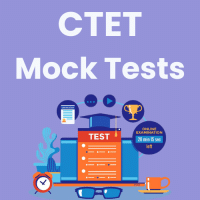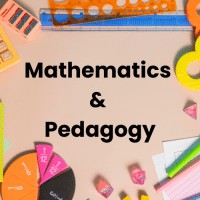Teaching Exam > Teaching Questions > Reading for comprehension can be best achieve...
Start Learning for Free
Reading for comprehension can be best achieved through
- a)Helping learners speak words softly while reading
- b)Learners reading silently and asking comprehension questions
- c)Asking the children to read text aloud
- d)All of these
Correct answer is option 'B'. Can you explain this answer?
Most Upvoted Answer
Reading for comprehension can be best achieved througha)Helping learne...
Reading for Comprehension
Reading for comprehension is a crucial skill that every learner needs to develop. It involves understanding what is being read, interpreting the meaning of the text, and being able to retain and use the information. There are various strategies that teachers can use to help learners develop this skill. In this context, option 'B' is the most appropriate answer.
Silent Reading and Comprehension Questions
Silent reading is a strategy that allows learners to read and understand the text without any distractions. It helps them focus on the content and engage with the material. After reading, asking comprehension questions can help learners to evaluate their understanding of the text. This technique is effective because it encourages learners to reflect on what they have read and think critically about the content.
Advantages of Silent Reading and Comprehension Questions
The following are some of the advantages of using silent reading and comprehension questions to improve reading comprehension:
- It helps learners to develop their reading skills at their own pace.
- It encourages learners to think critically about the content.
- It helps learners to develop their vocabulary and language skills.
- It allows learners to engage with the text and understand the meaning of the content.
Conclusion
In conclusion, reading for comprehension is an essential skill that every learner needs to develop. Teachers can use various strategies to help learners develop this skill, but the most effective one is silent reading and asking comprehension questions. This technique helps learners to engage with the text, understand the meaning of the content, and think critically about what they have read.
Reading for comprehension is a crucial skill that every learner needs to develop. It involves understanding what is being read, interpreting the meaning of the text, and being able to retain and use the information. There are various strategies that teachers can use to help learners develop this skill. In this context, option 'B' is the most appropriate answer.
Silent Reading and Comprehension Questions
Silent reading is a strategy that allows learners to read and understand the text without any distractions. It helps them focus on the content and engage with the material. After reading, asking comprehension questions can help learners to evaluate their understanding of the text. This technique is effective because it encourages learners to reflect on what they have read and think critically about the content.
Advantages of Silent Reading and Comprehension Questions
The following are some of the advantages of using silent reading and comprehension questions to improve reading comprehension:
- It helps learners to develop their reading skills at their own pace.
- It encourages learners to think critically about the content.
- It helps learners to develop their vocabulary and language skills.
- It allows learners to engage with the text and understand the meaning of the content.
Conclusion
In conclusion, reading for comprehension is an essential skill that every learner needs to develop. Teachers can use various strategies to help learners develop this skill, but the most effective one is silent reading and asking comprehension questions. This technique helps learners to engage with the text, understand the meaning of the content, and think critically about what they have read.

|
Explore Courses for Teaching exam
|

|
Question Description
Reading for comprehension can be best achieved througha)Helping learners speak words softly while readingb)Learners reading silently and asking comprehension questionsc)Asking the children to read text aloudd)All of theseCorrect answer is option 'B'. Can you explain this answer? for Teaching 2025 is part of Teaching preparation. The Question and answers have been prepared according to the Teaching exam syllabus. Information about Reading for comprehension can be best achieved througha)Helping learners speak words softly while readingb)Learners reading silently and asking comprehension questionsc)Asking the children to read text aloudd)All of theseCorrect answer is option 'B'. Can you explain this answer? covers all topics & solutions for Teaching 2025 Exam. Find important definitions, questions, meanings, examples, exercises and tests below for Reading for comprehension can be best achieved througha)Helping learners speak words softly while readingb)Learners reading silently and asking comprehension questionsc)Asking the children to read text aloudd)All of theseCorrect answer is option 'B'. Can you explain this answer?.
Reading for comprehension can be best achieved througha)Helping learners speak words softly while readingb)Learners reading silently and asking comprehension questionsc)Asking the children to read text aloudd)All of theseCorrect answer is option 'B'. Can you explain this answer? for Teaching 2025 is part of Teaching preparation. The Question and answers have been prepared according to the Teaching exam syllabus. Information about Reading for comprehension can be best achieved througha)Helping learners speak words softly while readingb)Learners reading silently and asking comprehension questionsc)Asking the children to read text aloudd)All of theseCorrect answer is option 'B'. Can you explain this answer? covers all topics & solutions for Teaching 2025 Exam. Find important definitions, questions, meanings, examples, exercises and tests below for Reading for comprehension can be best achieved througha)Helping learners speak words softly while readingb)Learners reading silently and asking comprehension questionsc)Asking the children to read text aloudd)All of theseCorrect answer is option 'B'. Can you explain this answer?.
Solutions for Reading for comprehension can be best achieved througha)Helping learners speak words softly while readingb)Learners reading silently and asking comprehension questionsc)Asking the children to read text aloudd)All of theseCorrect answer is option 'B'. Can you explain this answer? in English & in Hindi are available as part of our courses for Teaching.
Download more important topics, notes, lectures and mock test series for Teaching Exam by signing up for free.
Here you can find the meaning of Reading for comprehension can be best achieved througha)Helping learners speak words softly while readingb)Learners reading silently and asking comprehension questionsc)Asking the children to read text aloudd)All of theseCorrect answer is option 'B'. Can you explain this answer? defined & explained in the simplest way possible. Besides giving the explanation of
Reading for comprehension can be best achieved througha)Helping learners speak words softly while readingb)Learners reading silently and asking comprehension questionsc)Asking the children to read text aloudd)All of theseCorrect answer is option 'B'. Can you explain this answer?, a detailed solution for Reading for comprehension can be best achieved througha)Helping learners speak words softly while readingb)Learners reading silently and asking comprehension questionsc)Asking the children to read text aloudd)All of theseCorrect answer is option 'B'. Can you explain this answer? has been provided alongside types of Reading for comprehension can be best achieved througha)Helping learners speak words softly while readingb)Learners reading silently and asking comprehension questionsc)Asking the children to read text aloudd)All of theseCorrect answer is option 'B'. Can you explain this answer? theory, EduRev gives you an
ample number of questions to practice Reading for comprehension can be best achieved througha)Helping learners speak words softly while readingb)Learners reading silently and asking comprehension questionsc)Asking the children to read text aloudd)All of theseCorrect answer is option 'B'. Can you explain this answer? tests, examples and also practice Teaching tests.

|
Explore Courses for Teaching exam
|

|
Signup for Free!
Signup to see your scores go up within 7 days! Learn & Practice with 1000+ FREE Notes, Videos & Tests.























